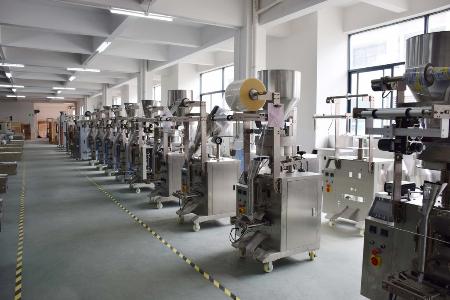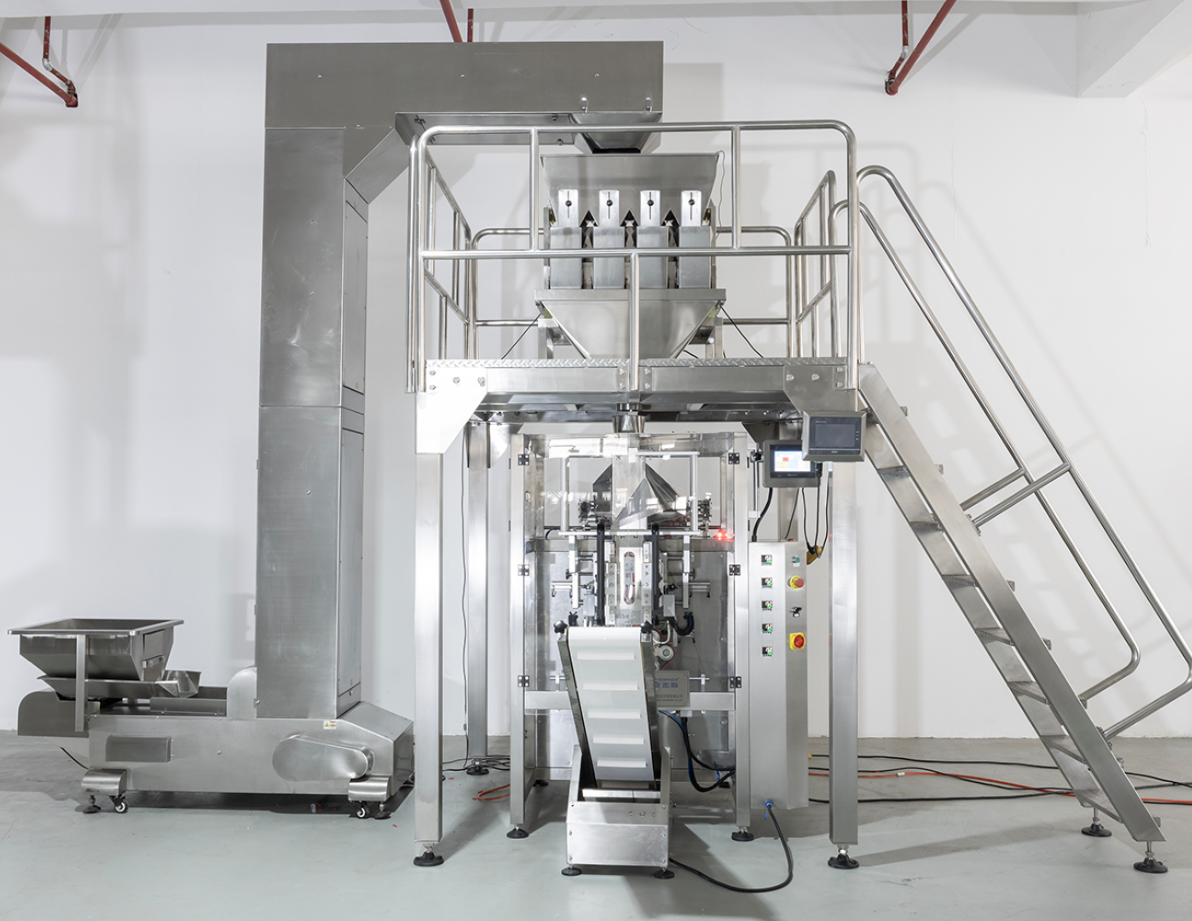
The demand for packaging machines
The genesis of packaging machines
The development of packaging machinery
Analysis of the Current Situation of Food Packaging Technology
Outlook for the Future of Food Packaging Machinery

Packaging concepts have a long history, and since ancient times, the Chinese people have been adept at utilizing natural resources, whether it be rattan or leaves, for wrapping and packaging goods. With the progress of the commodity economy and technology, packaging forms have undergone constant innovations.
The invention of papermaking in China paved the way for the emergence of paper packaging. Since 1850, when the price of paper plummeted, paper packaging started to be used for food packaging. Subsequently, in 1852, Mr. Wally from the United States invented the paper bag making machine, marking the beginning of the era of paper machinery. During the Industrial Revolution, with the rapid development of productive forces, packaging machines emerged as an essential part of modern production.
In the early 20th century, the development of electrical technology enabled food packaging machine to adopt electric drives, significantly enhancing their operating speed and efficiency. Simultaneously, the construction of packaging machines became increasingly sophisticated, with various new types of packaging machines, such as vacuum packaging machines and filling machines, emerging one after another. The emergence of new packaging containers and technologies, including plastic bags, plastic bottles, glass bottles, and aluminum cans, added more aesthetics and hygiene to product packaging, while also providing consumers with more choices.
With the continuous advancement of technology, the mid to late 20th century witnessed a new peak in the development of packaging machines. The application of automation technology made the operation of packaging machines more convenient and significantly improved production efficiency. The introduction of computer technology enabled packaging machines to achieve intelligent regulation, automatically adjusting packaging parameters based on production needs. Consequently, packaging machines found widespread applications in industries such as food, pharmaceuticals, and chemicals.
Since the dawn of the 21st century, with the rise of Industry 4.0, the development of packaging machines has entered a new era. The deep integration of emerging technologies such as the Internet of Things, big data, and artificial intelligence has endowed packaging machines with higher intelligence and personalized production potential. Today, intelligent packaging machines have become the stars of the production line, providing efficient and convenient packaging solutions for various industries.
Throughout the long history of packaging machines, we can see the leapfrog development of human society's productive forces. From the early paper bag making machines to today's intelligent packaging machines, the wave of technological advancement has always pushed packaging machines to higher levels. Looking ahead, with the rapid development of technology, we are confident that packaging machines will integrate into our daily lives in a more advanced manner, creating even more value for humanity.
Nowadays, we are living in a highly intelligent era, and packaging machines are leveraging cutting-edge technologies such as the Internet of Things, artificial intelligence, big data, and robotics to achieve remote monitoring, self-learning, automatic adjustment, and even autonomous operation. These capabilities enhance production efficiency, reduce labor costs, and improve packaging quality. These achievements undoubtedly demonstrate China's strong strength and innovative vitality in the field of technology.
The development of packaging machinery has been accompanied by the emergence of new packaging materials and continuous innovations in packaging technology. The invention of papermaking in China laid the foundation for the advent of paper packaging.
In 1850, the global paper market saw a sharp decline in prices, triggering the widespread adoption of paper packaging within the food industry. By 1852, innovators in the United States, like Wally, successfully engineered paper bag machines, heralding a new era for paper-based product machinery. Subsequently, in 1861, Germany established the inaugural packaging machinery factory, which later unveiled a fully automated forming, filling, and sealing machine in 1911.
Although China's journey in packaging machinery commenced somewhat later, after over two decades of advancement, it has emerged as a pivotal sector within the machinery industry, playing a crucial role in supporting the rapid growth of China's packaging sector. Certain packaging machinery has effectively satisfied domestic market demands, with some products even achieving international exports.
Nevertheless, it is worth noting that China's export value of packaging machinery comprises less than 5% of its total output value, while imports nearly equal the overall output value, revealing a considerable gap compared to developed nations. In terms of product diversity, China's packaging machinery encompasses approximately 1,300 varieties with limited production quantities. The absence of high-end, precise, and large-scale products poses challenges in meeting market demands. Quality concerns persist, including issues with performance, stability, reliability, design aesthetics, and surface finishing. Furthermore, numerous components and parts exhibit questionable quality, resulting in short lifespans and diminished reliability, directly impacting overall product quality.
Moreover, the domestic packaging machinery sector lacks large-scale, high-grade production enterprises. In terms of research and development, China primarily remains in the testing and imitation stages, displaying weak independent innovation capabilities and a shortage of R&D production pilot bases. Scientific research investment represents merely 1% of sales, in stark contrast to the prevalent 8-10% in foreign counterparts.
In summary, China's packaging machinery technology trails behind developed nations by approximately two decades, with weaker competitiveness in product development, performance, quality, reliability, and service.
Amidst ongoing technological advancements, the packaging machinery industry confronts various challenges, including outdated corporate development ideologies, inadequate innovation capabilities, a deficiency in independent thought during new product R&D, and diminished competitiveness. Economic growth predominantly hinges on expanding production capacity, hindering efficiency enhancements. Additionally, some packaging machinery enterprises operate in a rudimentary manner, failing to achieve refined operations. Market awareness, competitiveness, crisis awareness, service consciousness, developmental urgency, and responsibility are all insufficient.
Addressing these challenges necessitates a shift in the development paradigm of the packaging machinery industry. Enterprises must establish a new baseline, confront and resolve the aforementioned contradictions and issues, redefine their development philosophy, bolster independent innovation, enhance market awareness, and drive forward the advancement of the domestic packaging machinery sector.
To transform the current state of the packaging machinery industry and promote its development, we need to pay attention to the trends in packaging machinery. With the advancement of technology and the emergence of various food processing products, higher demands are placed on packaging technology and equipment, making packaging machinery increasingly important in the field of distribution.
Currently, competition in the packaging machinery industry is becoming increasingly fierce. Equipment that is highly automated, intelligent, multifunctional, efficient, and low-energy consuming is highly regarded in the industry. The degree of automation in the technological process is gradually increasing, with automation technology accounting for over 50% of applications in packaging production lines. The widespread adoption of computer design and mechatronic control improves production efficiency, equipment flexibility, and adaptability. Additionally, the use of mechanical arms is becoming commonplace to perform complex packaging tasks.
Each mechanical arm is controlled by an independent computer, and cameras monitor the packaging process, feeding information back to the computer to adjust the range of motion and ensure packaging quality. It is predicted that packaging machinery will become an emerging industry in the future. Internationally, countries like the United States, Germany, Japan, Italy, and the UK boast high levels of packaging and food machinery.
In the 1990s, the global food industry reached a total output value of 2.2 trillion US dollars, surpassing other industries. At the same time, the food packaging industry accounted for nearly 60% of the overall packaging industry. It is expected that by the middle of the 21st century, countries will continue to focus on addressing people's dietary needs, making the food and packaging industries evergreen industries.
Food varieties are rich and diverse, and they are vulnerable to microbial attacks as well as physical and chemical factors. Therefore, food packaging machines need to possess powerful protective, practical, and marketing functions. Currently, the trends in food packaging include sterility, miniaturization, diversification, convenience, mechanization, and automation.
Regardless of the packaging method used, food packaging machines should reasonably select packaging materials and containers based on the internal packaging requirements. For liquid foods, plastic bottles, glass bottles, metal cans, bags, boxes, and cups made of composite materials are commonly used. For semi-liquid foods, plastic or glass jars, bags, boxes, and cups made of composite materials are frequently chosen. For powdered, granular, and mixed liquid foods, metal cans, plastic jars, bags, boxes, and cans made of composite materials are typically utilized. For solid foods such as blocks, slices, strips, balls, and hemispheres, large plastic boxes, metal cans, bags, trays, and boxes made of composite materials are commonly employed.
In summary, among the current food sales packaging containers, the proportion of metals, glass bottles and cans, and boxes is relatively small and showing a downward trend. They are mainly used for gift packaging or special packaging. Thin cardboard boxes and trays, due to their poor barrier properties, are mostly used as outer packaging. Only bags, boxes, and cups made of composite materials based on plastic films can fully leverage their advantages in protecting food, enhancing appearance, and offering diverse shapes. They are easy to process, resource-saving, cost-effective, convenient to use, and highly adaptable. These packaging options cover almost all fields (usually excluding gaseous and liquid materials) and are widely used in various scenarios on land, sea, and air, indicating a broad development prospect.
With the acceleration of the pace of life and the popularity of nutritional and health food, people's expectations for food packaging are becoming increasingly urgent. Given the widespread use of refrigerators and microwave ovens, it is expected that frozen foods, especially convenience foods, will flood into households and businesses, and even serve in the tourism sector. Simultaneously, there is a need to actively research, develop, and promote emerging technologies and products such as vacuum packaging, vacuum inflatable packaging, and aseptic packaging, which complement frozen food packaging and push food packaging to a higher level.
The market potential for food packaging machinery is immense, as consumers expect lightweight and convenient box-shaped food packaging containers that are easy to open, freely placeable, resealable multiple times, recyclable, and safe and reliable. Therefore, it is necessary to take corresponding measures to improve the design of bags and boxes, realizing scientific and diversified main body and sealing structures.
As is widely known, in business competition, quality and price must strike a balance. If this can be truly achieved, food packaging machinery will undoubtedly occupy a dominant position in the market. One strategy is the organic integration of reasonable packaging and simplified packaging. Obviously, reasonable does not equate to simple, as exemplified by the outdated bare thin plastic tube packaging for drinks and the soft paper box packaging with a top and bottom lid for biscuits. In fact, many carefully designed bag and box packaging today already possess this advantage, as they economically and reasonably simplify the packaging form, structure, process, and equipment. This significantly reduces resource consumption during production and sales, eliminates unstable factors, enhances overall efficiency, and fully demonstrates the development trend of modern packaging.